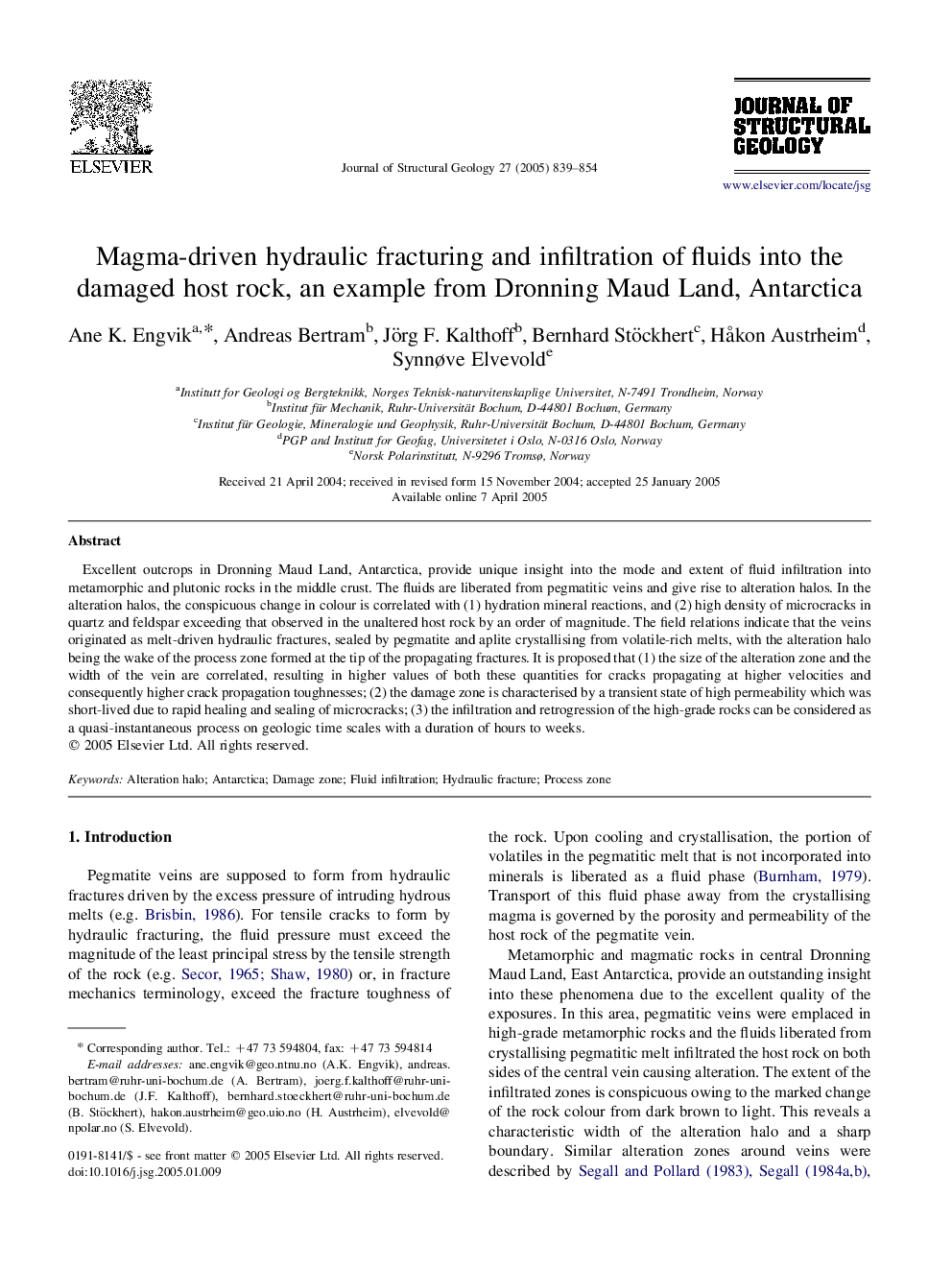| Article ID | Journal | Published Year | Pages | File Type |
|---|---|---|---|---|
| 9536133 | Journal of Structural Geology | 2005 | 16 Pages |
Abstract
Excellent outcrops in Dronning Maud Land, Antarctica, provide unique insight into the mode and extent of fluid infiltration into metamorphic and plutonic rocks in the middle crust. The fluids are liberated from pegmatitic veins and give rise to alteration halos. In the alteration halos, the conspicuous change in colour is correlated with (1) hydration mineral reactions, and (2) high density of microcracks in quartz and feldspar exceeding that observed in the unaltered host rock by an order of magnitude. The field relations indicate that the veins originated as melt-driven hydraulic fractures, sealed by pegmatite and aplite crystallising from volatile-rich melts, with the alteration halo being the wake of the process zone formed at the tip of the propagating fractures. It is proposed that (1) the size of the alteration zone and the width of the vein are correlated, resulting in higher values of both these quantities for cracks propagating at higher velocities and consequently higher crack propagation toughnesses; (2) the damage zone is characterised by a transient state of high permeability which was short-lived due to rapid healing and sealing of microcracks; (3) the infiltration and retrogression of the high-grade rocks can be considered as a quasi-instantaneous process on geologic time scales with a duration of hours to weeks.
Related Topics
Physical Sciences and Engineering
Earth and Planetary Sciences
Geology
Authors
Ane K. Engvik, Andreas Bertram, Jörg F. Kalthoff, Bernhard Stöckhert, HÃ¥kon Austrheim, Synnøve Elvevold,
